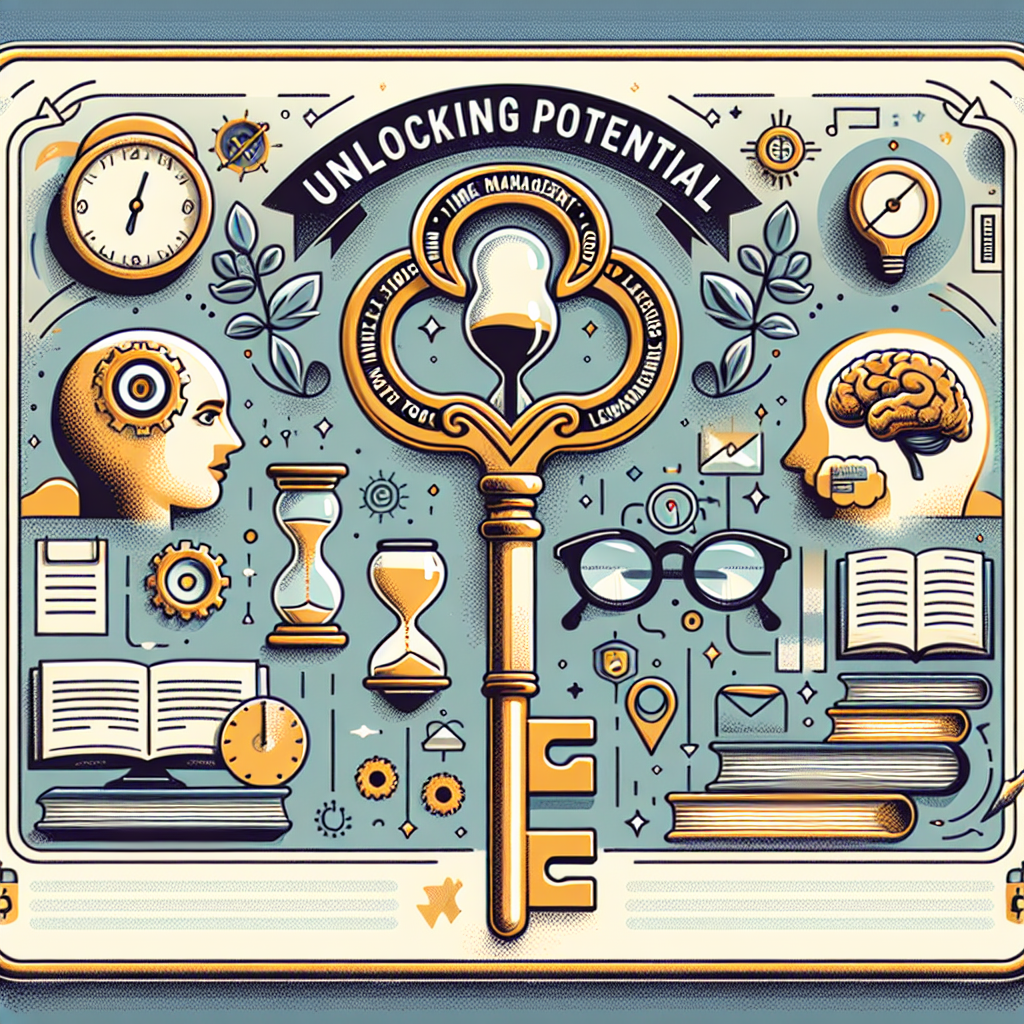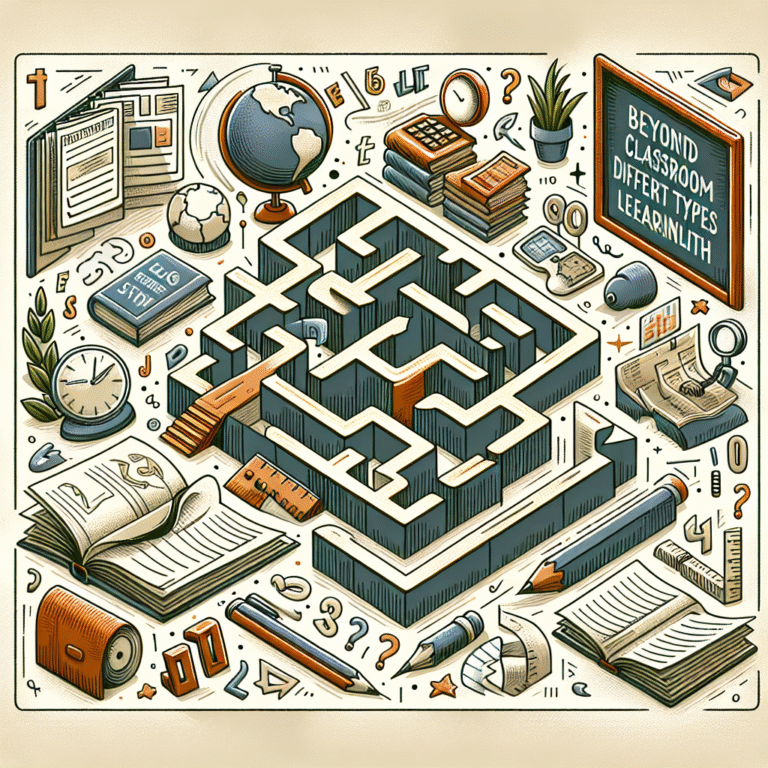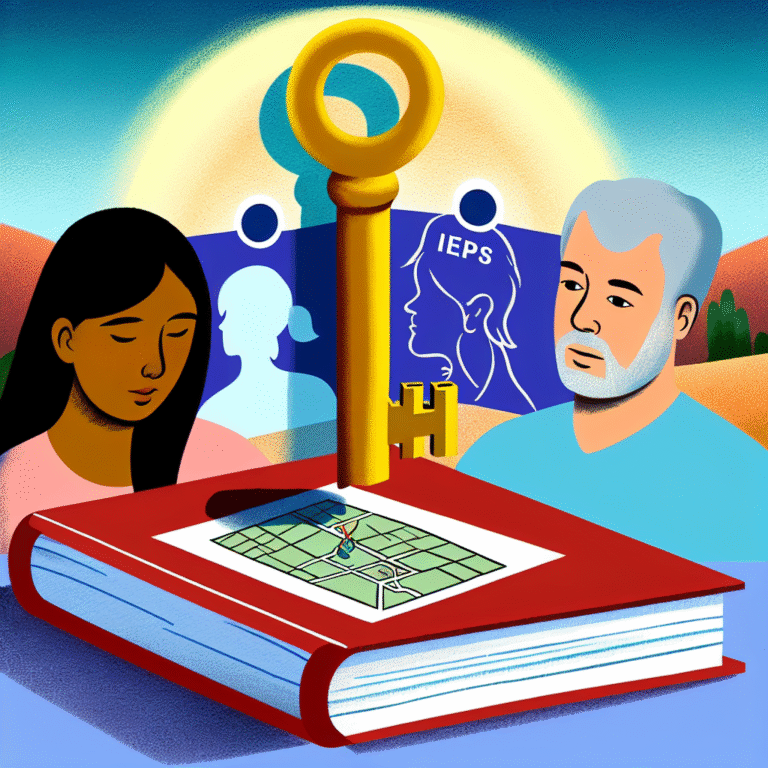
Unlocking Potential: Essential Time Management Tools for Those Facing Learning Challenges
Introduction
In today’s fast-paced world, time management is not just a skill; it’s a necessity. For individuals facing learning challenges, mastering time management can feel particularly daunting. Yet, with the right tools and strategies, unlocking potential becomes an achievable goal. This article explores practical and proven time management tools specifically tailored for those experiencing learning difficulties. Dive in as we unravel actionable insights and relatable case studies that not only educate but inspire.
Understanding Learning Challenges
Before delving into time management tools, it’s essential to understand the various learning challenges that individuals may face. Learning disabilities, ADHD, anxiety, and dyslexia affect how a person processes information and manages time. Awareness of these challenges is the first step toward implementing effective strategies.
The Importance of Time Management
Effective time management allows individuals to prioritize tasks, reduce stress, and enhance productivity—crucial elements when one is navigating the complexities of learning challenges. Being organized and using time wisely can help unlock potential in academic and personal growth. It sets a foundation for success that can ripple across various aspects of life.
Essential Time Management Tools
The following sections provide a comprehensive overview of various time management tools, including digital apps, planners, and techniques that specifically support those facing learning challenges.
1. Digital Tools
A. Todoist
Todoist is a task management application that enables users to create to-do lists and prioritize their tasks efficiently. For individuals with learning challenges, the ability to visualize tasks can significantly reduce overwhelm.
Case Study: Sarah, a college student with ADHD, used Todoist to manage her assignment deadlines. By breaking down her projects into smaller, manageable tasks, Sarah felt less overwhelmed and more in control of her academic responsibilities.
| Feature | Benefit |
|---|---|
| Simple Interface | Easy to navigate for all users |
| Prioritization | Helps identify urgent tasks |
| Reminders | Reduces the risk of forgetfulness |
B. Trello
Trello is designed for visual learners, providing a board-based approach to project management. Cards can be moved between different lists, allowing users to track progress on various tasks.
Case Study: John, who has dyslexia, uses Trello to organize his study modules visually. This visual cue system helps him remember topics he needs to focus on, improving his overall retention and understanding of the material.
2. Physical Planners
A. Bullet Journals
The Bullet Journal (BuJo) method offers a flexible way to combine notebook and planner functionalities. Individuals can customize their pages, creating a personal organizational system that accommodates their unique needs.
Case Study: Emily, a high school student with anxiety, found solace in bullet journaling. By creating a daily log of tasks, events, and thoughts, she felt she could manage her anxiety better, thanks to her structured approach.
| Benefit | Description |
|---|---|
| Customizable | Personalizes learning experiences |
| Creative Outlet | Allows artistic expression |
| Mindfulness | Helps clarify thoughts and tasks |
3. Techniques for Effective Time Management
A. The Pomodoro Technique
The Pomodoro Technique is a productivity method that breaks work into intervals (typically 25 minutes) followed by short breaks. This structure can enhance focus and minimize distractions.
Case Study: Alex, who struggles with time blindness due to ADHD, adopted the Pomodoro Technique to stay focused during study sessions. He reported a significant increase in his productivity and the quality of his study time.
B. Time Blocking
Time blocking involves allocating specific blocks of time for designated activities. This method helps individuals visualize their day and ensures they dedicate time to various responsibilities.
Case Study: Nina, a working parent of a child with learning challenges, implemented time blocking to manage her daily schedule. It helped her balance work, family, and time for supporting her child’s learning needs effectively.
Creating a Personalized Time Management System
To unlock potential, individuals must create a system tailored to their specific needs. Here’s a step-by-step process to help establish an effective time management approach:
Step 1: Assess Your Challenges
Identify the specific learning challenges you face. Understanding how they affect your time management is crucial in finding suitable tools.
Step 2: Explore Various Tools
Try out different tools mentioned in this article. Determine which ones resonate with you. What works for one person may not work for another.
Step 3: Develop a Routine
Integrate your chosen tools into a daily routine. Consistency is key to developing effective habits that enhance your learning experience.
Step 4: Adjust and Reflect
Like any skill, time management requires practice. Evaluate your progress regularly and adjust your approach as necessary to accommodate your evolving needs.
The Role of Support Systems
Building a Support Network
A strong support system can elevate one’s ability to unlock potential. Whether it’s friends, family, or educational professionals, having people who understand your journey can provide encouragement and accountability.
Seeking Professional Help
In some cases, working with a coach or therapist familiar with learning challenges can offer personalized strategies for effective time management. They can help identify obstacles and develop tailored solutions to overcome them.
Conclusion
Unlocking potential through effective time management is within reach for anyone facing learning challenges. By utilizing essential tools, adopting proven techniques, and having a supportive environment, individuals can transform their experiences and achieve their fullest potential.
Remember, it’s not about achieving perfection; it’s about making progress. With the right strategies, even the most overwhelming tasks can become manageable.
FAQs
1. What are learning challenges?
Learning challenges are diverse difficulties that can affect a person’s ability to learn and process information. These can include ADHD, dyslexia, anxiety, and more.
2. How can time management tools help individuals with learning challenges?
Time management tools can help individuals prioritize their tasks, reduce stress, and enhance productivity, leading to a more organized and fulfilled life.
3. Are digital tools better than physical ones?
It depends on individual preferences. Some people prefer the visual elements of physical planners, while others find digital tools more convenient.
4. How can routine help in managing time effectively?
A routine helps establish consistency and predictability in one’s schedule, making it easier to develop habits that improve time management.
5. What should I do if a tool isn’t working for me?
It’s essential to experiment with different tools and strategies. If something isn’t working, reassess your needs and try other options until you find what fits best.
Unlocking potential: time management tools for those facing learning challenges are not merely about organization; they are about empowerment, creating opportunities, and paving pathways to success. With a proactive approach, each step taken can lead to profound transformations. Take the first step today!






